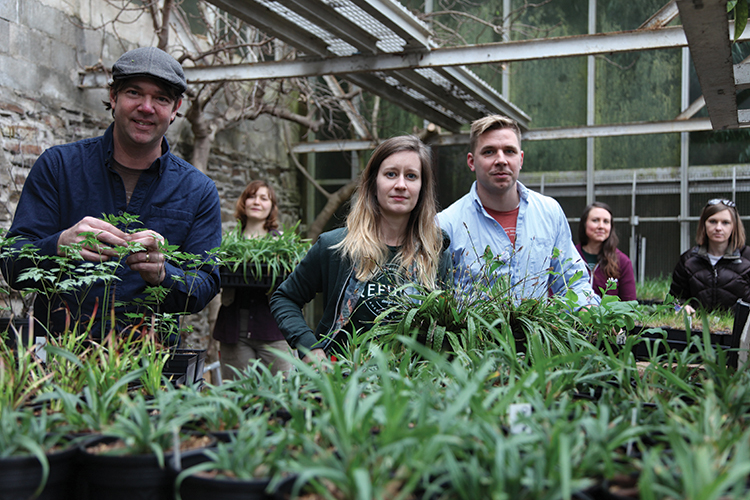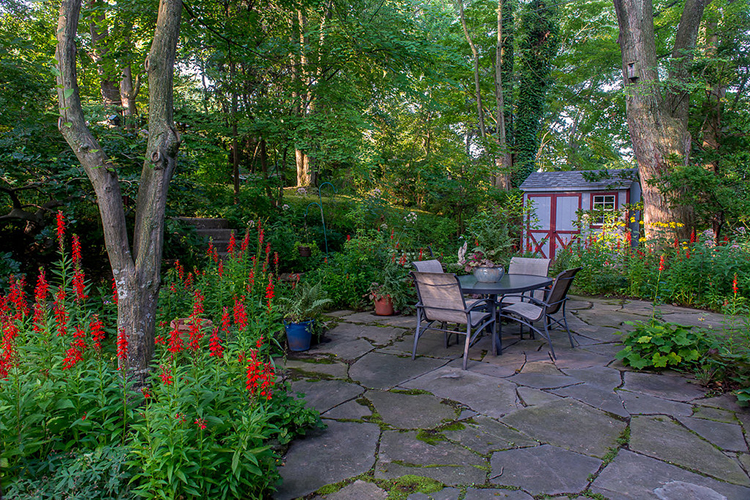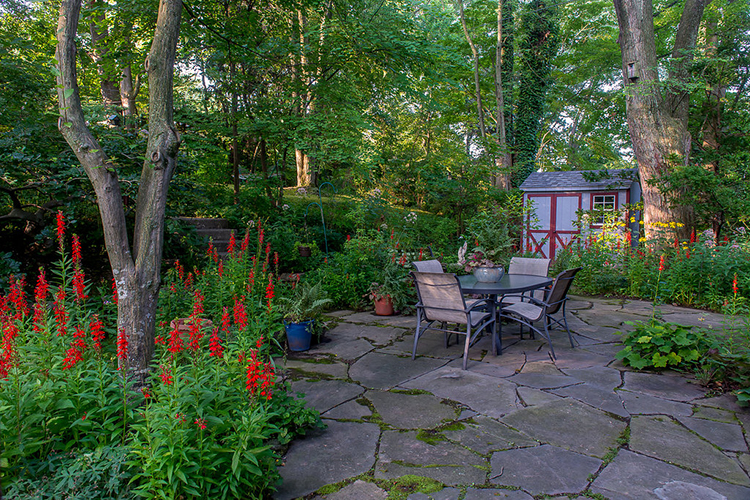Walk out of your rowhouse and there they are, incessantly cheeping from the eaves. Outside your office they’ll peck crumbs off the sidewalk or catch a quick bath in a street puddle before the next tire rolls through. Eat lunch on a park bench, and they will watch with their little heads cocked to the side, waiting for you to drop a crumb. The house sparrow “is the default little brown bird you see on street corners and edges of yards and stuff,” explained George Armistead, president of the Delaware Valley Ornithological Club and co-founder of Bird Philly.
It’s hard to imagine now, but for the first 200 years of Philadelphia’s history, there were no house sparrows. The Eurasian birds (our native sparrows look similar but are unrelated) were intentionally imported in the mid-to-late 1800s to fight urban tree pests. The first releases were in Portland, Maine; New York; and Boston, but in 1869 Philadelphia got in on the act. As Philadelphia’s Thomas Gentry described in his 1878 book, “The House Sparrow at Home and Abroad,” Philadelphians had been desperate for a solution to an infestation of inchworms. John Bardsley, aka “Sparrow Jack,” a Germantown lawyer originally from England, offered to bring some house sparrows back from a visit to his home village. City Council took him up on the offer, and in March he returned with more than 1,000.
You can track this sparrow delivery in “Sparrow Jack,” a children’s book by Mordicai Gerstein. “To me it was a story of immigrants, and for me humans weren’t the only immigrants,” Gerstein said. This fanciful telling shows a city exasperated by inchworms eating its trees and then rescued by Bardsley and his birds. As Gentry wrote in his drier version of the events, “[E]mancipated at a period when nature was buoyant with life, and all aglow with beauty and song, there could be no obstacle to their easy acclimatization, and consequent multiplication and diffusion.”
Multiply and diffuse they did, but so did regrets. House sparrows do catch caterpillars and other bugs to feed their young but, when older, mainly eat seeds and grain. In the countryside they quickly became an agricultural pest. The aggressive little birds pushed out natives, particularly other cavity nesters such as bluebirds and house wrens—casus belli for what historians call the Sparrow Wars of the late 1800s. On one side were those who valued them for fighting insects; on the other were nature lovers and ornithologists, including Gentry, pointing out the ecological and agricultural damage caused by the birds.
The sparrows won in the end, and bird lovers are generally still angry about it, though that might depend on the habitat. “In the city, in really urban areas, they’re not competing with much native,” explained Armistead, who lives in Point Breeze. “My parents live in Mount Airy, where there is more bird habitat. There, if you put up a birdhouse for bluebird, house wren, tree swallow or chickadees, house sparrows keep taking them over, and that’s where there’s resentment toward them and they do the most damage.”
Our native birds might take some comfort in a recent drop in house sparrow numbers. As Ken Frank describes in “The Ecology of Center City Philadelphia,” Pennsylvania house sparrow numbers have declined 62 percent since 1966, and no one knows why.
The decline is more concerning in their native territory. In London, for example, they declined 60 percent between 1994 and 2004, according to the Royal Society for the Protection of Birds. In India, the Nature Forever Society has tried to rally conservation interest by declaring March 20 World Sparrow Day and naming it the state bird of Delhi. As the society’s president Mohammed Dilawar puts it, “The house sparrow is one bird which is seen by everyone, by kids, by adults, by people from various socioeconomic strata… It is a bird of the common man.”
Jessica Burnett, a wildlife researcher, has studied house sparrows in Florida and makes the case for an American interest in the decline, even though they’re not native. “The house sparrow is declining across the globe in its native and non-native range… and researchers just don’t know why, and it’s kind of disturbing.” Whatever is affecting the sparrows won’t necessarily stop with them, she said. “What’s going to happen to our native wildlife?… What happens if no bird species can thrive in our urban areas?”
For now, at least, urbanites can still take some pleasure in the omnipresent birds. “You can make observations from a park bench,” Armistead said. “And they are spirited little guys. They have a ton of attitude given their size. They’re pesky, rambunctious, they gather in groups and duke it out for dominance. Like it or not, house sparrows are a part of our landscape.”










Great article but why not have a banner picture of the subject of the article (house sparrow) instead of the author?